Astronomer Royal
This article needs additional citations for verification. (March 2011) |

Astronomer Royal is a senior post in the Royal Households of the United Kingdom. There are two officers, the senior being the astronomer royal dating from 22 June 1675; the junior is the astronomer royal for Scotland dating from 1834.
The post was created by King Charles II in 1675, at the same time as he founded the Royal Observatory, Greenwich. He appointed John Flamsteed, instructing him "forthwith to apply himself with the most exact care and diligence to the rectifying the tables of the motions of the heavens, and the places of the fixed stars, so as to find out the so-much desired longitude of places, for the perfecting the art of navigation."[1][2][3]
History[edit]
The origin of the title Astronomer Royal is unknown. [4] Although Flamsteed is widely considered the first Astronomer Royal, he was never appointed with the title and only referred to in the Warrant to Ordinance as "Our Astronomical Observer".[4] Similar language was used to appoint all the Astronomer Royals until 1881 with William Christie's appointment. The term Astronomer Royal did not become commonly used until the late 18th Century while the Royal Warrants still used "Our Astronomical Observer"[4] Other titles such as Royal Professor at Greenwich were also used is less formal documents during this time. [4]
In 1703, Newton was elected President of the Royal Society and was upset with the lack of publications coming from the Greenwich Observatory under Flamsteed. [5] This eventually led to Queen Anne's Warrant of 1710 where members of thee Royal Society was appointed as the Board of Visitors to the Royal Observatory to oversee Flamsteed. [4] The original Board of Visitors consisted entirely of associates and allies of Newton which enraged Flamesteed.[5]
The astronomer royal was director of the Royal Observatory, Greenwich from the establishment of the post in 1675 until 1972. The astronomer royal became an honorary title in 1972 without executive responsibilities, and a separate post of director of the Royal Greenwich Observatory was created to manage the institution.[3][6]
Astronomers Royal are responsible for many different discoveries and theories. They had several assistants who aided in their research at the Royal Observatory, Greenwich. The most important position was the computers or people that would do all the math computations behind the astronomers' observations. Many of these computers were women and they were often left out of articles and books leaving them out of most common history sources.[7]
The astronomer royal today receives a stipend of 100 GBP per year and is a member of the royal household, under the general authority of the Lord Chamberlain. After the separation of the two offices, the position of astronomer royal has been largely honorary, although the holder remains available to advise the Sovereign on astronomical and related scientific matters,[8] and the office is of great prestige.
There was formerly a royal astronomer of Ireland who was also the Andrew's Professor of Astronomy at the University of Dublin.[9] Both became vacant in 1921 with Irish Independence but a new Andrew's Professor of Astronomy was appointed in 1985.[9]
Astronomers Royal[edit]
| # | Image | Name | Start year | End year | Reference |
|---|---|---|---|---|---|
| 1. |  |
John Flamsteed | 1675 | 1719 | [2][8] |
| 2. | 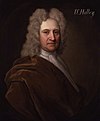 |
Edmond Halley | 1720 | 1742 | [2][8] |
| 3. | 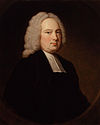 |
James Bradley | 1742 | 1762 | [2][8] |
| 4. |  |
Nathaniel Bliss | 1762 | 1764 | [2][8] |
| 5. |  |
Nevil Maskelyne | 1765 | 1811 | [2][8] |
| 6. | John Pond | 1811 | 1835 | [2][8] | |
| 7. | 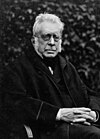 |
Sir George Biddell Airy | 1835 | 1881 | [6][8] |
| 8. | 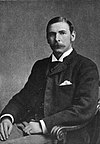 |
Sir William Christie | 1881 | 1910 | [6][8] |
| 9. |  |
Sir Frank Dyson | 1910 | 1933 | [6][8] |
| 10. | Sir Harold Spencer Jones | 1933 | 1955 | [6][8] | |
| 11. | Sir Richard van der Riet Woolley | 1956 | 1971 | [6][8] | |
| 12. | Sir Martin Ryle | 1972 | 1982 | [6][8] | |
| 13. |  |
Sir Francis Graham-Smith | 1982 | 1990 | [8] |
| 14. |  |
Sir Arnold Wolfendale | 1991 | 1995 | [8] |
| 15. | 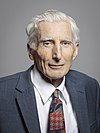 |
Martin Rees, Baron Rees of Ludlow | 1995 | Incumbent | [8] |
Notable discoveries and works of Astronomer Royals[edit]
John Flamsteed is responsible for a few important discoveries including proving his theory of annual stellar parallax and the discovery of Uranus even though he thought it was a star.[10] In 1694 he was able to gather evidence of the stellar parallax and was the first person to prove that the earth rotates around the sun.[11] However, his biggest contribution to the royal observatory and later Astronomer Royals was his high standard of work.
Six years after the death of Flamsteed, Historia Coelestis Britannica published containing much of the data and theories he had spent his life working on both before and after his appointment as Astronomer Royal.[12] It contains accurate tables of lunar motion, planetary motion, and detailed stellar catalogues of 2935 stars.[12] This publication made the Astronomer Royal and the Royal Observatory, Greenwich internationally renown for precise observation.[13]
Edmund Halley, was determined to find a way to find longitude at sea without sight of land.[14] Starting in 1725, Halley while serving Astronomer Royal and a Commissioner of the Board of Longitude made very detailed and precise observations of the moon.[14] From these observations he was able to show that longitude could be calculated using the moon in 1731.[14] Although the error is his calculations was about 69 miles at the equator, it was more accurate then any other methods until the marine chronometer for finding longitude.[14]
In popular culture[edit]
The astronomer royal is mentioned in H. G. Wells' novel The War of the Worlds and in George Orwell's Down and Out in Paris and London.[15] He also makes an appearance in the lyrics of Gilbert and Sullivan's The Pirates of Penzance[16] and plays an important role in Fred Hoyle's novel The Black Cloud.[17]
References[edit]
- ^ F Baily, "An Account of the Rev. John Flamsteed", reprinted in vol. 28, at p. 293. "The Museum of foreign literature, science and art", R Walsh et al., publ. E Litell, 1836.
- ^ a b c d e f g Forbes, Eric G. (1975). Greenwich Observatory, volume 1: Origins and Early History (1675–1835). London: Taylor & Francis. Bibcode:1975gosb.book.....F.
- ^ a b McCrea, William Hunter (1975). Royal Greenwich Observatory : an Historical Review Issued on the Occasion of its Tercentenary. London: Her Majesty's Stationery Office. Bibcode:1975rgo..book.....M.
- ^ a b c d e Lovell, Bernard (1994). "The Royal Society, the Royal Greenwich Observatory and the Astronomer Royal". Notes and Records of the Royal Society of London. 48 (2): 283–297. ISSN 0035-9149.
- ^ a b Ronan, Colin (1969). Astronomers Royal. New York: Doubleday and Company. pp. 43–44. ISBN 108061903013.
{{cite book}}: Check|isbn=value: length (help) - ^ a b c d e f g Meadows, A. J. (1975). Greenwich Observatory, volume 2: Recent History (1836–1975). London: Taylor & Francis. Bibcode:1975gosb.book.....F.
- ^ Mullen, Kane (2020). "Temporary Measures: Women Computers at the Royal Observatory, Greenwich, 1890–1895". Journal for the History of Astronomy. 51: 88–121. doi:10.1177/0021828620901358.
- ^ a b c d e f g h i j k l m n o p "Astronomer Royal". The British Monarchy. Royal Household. Archived from the original on 8 March 2016. Retrieved 23 June 2017.
- ^ a b "1986IrAJ...17..167W Page 167". articles.adsabs.harvard.edu. Retrieved 8 March 2024.
- ^ Armitage, Angus (1946). "Our First Astronomer Royal—the Tercentenary of John Flamsteed". Science Progress (1933- ). 34 (135): 506–515. ISSN 0036-8504.
- ^ Armitage, Angus (1946). "Our First Astronomer Royal—the Tercentenary of John Flamsteed". Science Progress (1933- ). 34 (135): 506–515. ISSN 0036-8504.
- ^ a b Schaffer, S. (July 1984). "The Preface to John Flamsteed's Historia Coelestis Britannica (Book): Annals of Science". Annals of Science. 41 (4): 409.
- ^ Ronan, Colin (1969). Astronomers Royal. New York: Doubleday and Company. pp. 43–44. ISBN 108061903013.
{{cite book}}: Check|isbn=value: length (help) - ^ a b c d Ronan, Colin (1969). Astronomers Royal. New York: Doubleday and Company. pp. 46–47.
- ^ p. 175, Penguin edition
- ^ "The Pirates of Penzance by Gilbert and Sullivan". The Gilbert and Sullivan Archive.
- ^ Burchell, Tania (8 February 2020). "The Black Cloud: Scientists in Science Fiction" (PDF). National Radio Astronomy Observatory. Retrieved 18 March 2024.
